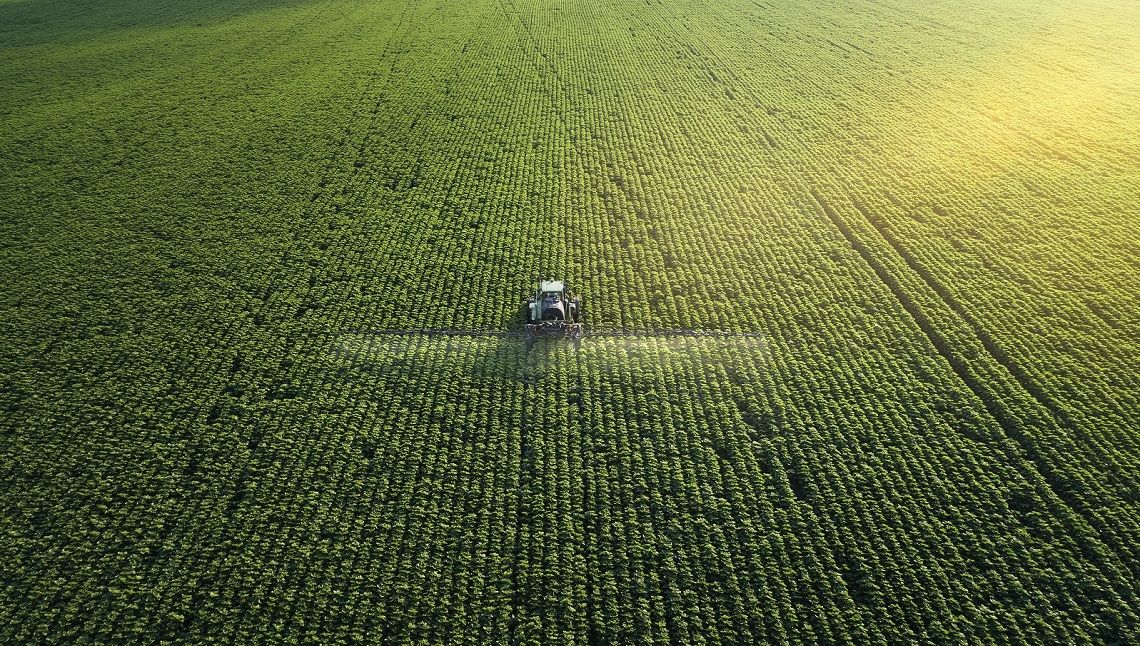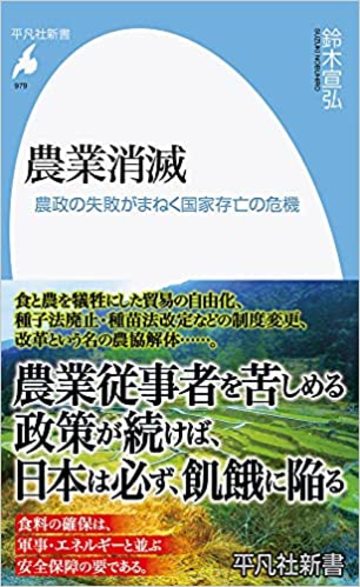シェアしました。

「自国民が食べないもの」が日本に送られている
アメリカの穀物農家は、日本に送る小麦には、発がん性に加え、腸内細菌を殺してしまうことで、さまざまな疾患を誘発する懸念が指摘されているグリホサートを、雑草ではなく麦に直接散布している。収穫時に雨に降られると小麦が発芽してしまうので、先に除草剤で枯らせて収穫するのだ。枯らして収穫し、輸送するときには、日本では収穫後の散布が禁止されている農薬イマザリルなどの防カビ剤を噴霧する。
「これはジャップが食べる分だからいいのだ」とアメリカの穀物農家が言っていた、との証言が、アメリカへ研修に行った日本の農家の複数の方から得られている。
グリホサートについては、日本の農家も使っているではないか、という批判もあろう。だが、日本の農家はそれを雑草にかける。
農家の皆さんが雑草にかけるときも慎重にする必要はあるが、いま、問題なのは、アメリカからの輸入穀物に残留したグリホサートを、日本人が世界で一番たくさん摂取しているという現実である。
日本の食パンのほとんどから検出。
しかも、アメリカで使用量が増えているので、日本人には小麦のグリホサートの摂取限界値を6倍に緩めるよう要請され、日本政府は2017年12月25日に、「クリスマス・プレゼント」と称して緩めてしまったのだ。残念ながら、日本人の命の基準値はアメリカの必要使用量から計算されているのであろうか。
農民連食品分析センターの検査によれば、日本で売られているほとんどの食パンからグリホサートが検出されているが、当然ながら、国産や十勝産と書いてある食パンからは検出されていない。
しょうゆからも検出
また、大豆製品では、Rubio ほかがフィラデルフィアで購入した醤油中のグリホサート分析をし、検査した醤油の36パーセントで定量下限より多いグリホサートが検出された。有機醤油からグリホサートは検出されなかった(渡部和男氏のメモ、2015)。
日本国内の醤油についての検査も不可欠と考えられる。日本人の毛髪検査からの輸入穀物由来とみられるグリホサート検出率も高い(28人中19人に検出、検出率68パーセント)。
世界的にはグリホサートへの消費者の懸念が高まり、規制が強化されるなかで、日本は逆に規制を緩和しているので、日本での儲けに期待が高まることになる。
2018年3月末に、消費者庁から「消費者の遺伝子組み換え表示の厳格化を求める声に対応した」として、GM(遺伝子組み換え)食品の表示厳格化の方向性が示された。
アメリカからは、日本に対してGM表示を認めないとの圧力が強まると懸念されていたなかで、私はGM表示の厳格化を検討するとの発表を聞いたときから、アメリカからの要請に逆行するような決定が本当に可能なのか疑念を抱いていた。
特にアメリカが問題視しているのは、「遺伝子組み換えでない」(non-GM)という任意表示についてである。すなわち、「日本のGM食品に対する義務表示は、対象品目が少なく、混入率も緩いから、まあよい。問題はnon-GM表示を認めていることだ」と日本のGM研究の専門家の一人から聞いていたからなのだ。
「GM食品は安全だと世界的にされているのに、そのような表示を認めるとGMが安全でないかのように消費者を誤認させるからやめるべきだ。続けるならばGMが安全でないという科学的証拠を示せ」という主張であった。
そもそも緩かった「遺伝子組み換え表示義務」
日本のGM食品に関する表示義務は、①混入率については、おもな原材料(重量で上位3位、重量比5パーセント以上の成分)についての5パーセント以上の混入に対して表示義務(注1)を課し、②対象品目は、加工度の低い、生に近いもの(注2)に限られ、加工度の高い(=組み換えDNAが残存しない)油・醤油をはじめとする多くの加工食品(注3)、また遺伝子組み換え飼料による畜産物は除外とされている。
(注2):トウモロコシ、大豆、じゃがいも、アルファルファ、パパイヤ、コーンスナック菓子、ポップコーン、コーンスターチ、味噌、豆腐、豆乳、納豆、ポテトスナック菓子など。
(注3):サラダ油、植物油、マーガリン、ショートニング、マヨネーズ、醤油、甘味料類(コーンシロップ、液糖、異性化糖、果糖、ブドウ糖、水飴、みりん風調味料など)、コーンフレーク、醸造酢、醸造用アルコール、デキストリン(粘着剤などに使われる多糖類)など。
これは、0.9パーセント以上の混入があるすべての食品に、GM表示を義務付けているEUに比べて、混入率、対象品目ともに極めて緩い。
これに対する厳格化として、決定された内容を見て驚いたのは、①と②はまったくそのままなのである。
厳格化されたのは、「遺伝子組み換えでない」(non-GM)という任意表示についてだけで、現在は5パーセント未満の「意図せざる混入」であれば、「遺伝子組み換えでない」と表示できたのを、「不検出」(実質的に0パーセント)の場合のみにしか表示できないと、そこだけ厳格化したのである(違反すると社名も公表される)。
非遺伝子組み換え食品の選別が困難に。
この表示義務の厳格化が、2023年4月から施行されれば、表示義務の非対象食品が非常に多いなかで、可能な限りnon-GMの原材料を追求し、それを「遺伝子組み換えでない」と表示して、消費者にnon-GM食品を提供しようとしてきた、GMとnon-GMの分別管理の努力へのインセンティブが削がれてしまう。そして、小売店の店頭から、「遺伝子組み換えでない」という表示の食品は、一掃される可能性が出てくるだろう。
例えば、豆腐の原材料欄には、「大豆(遺伝子組み換えでない)」といった表示が多いが、国産大豆を使っていれば、GMでないから、今後も「遺伝子組み換えでない」と表示できそうに思うが、流通業者の多くは輸入大豆も扱っているので、微量混入の可能性は拭えない。
実際、農民連食品分析センターの分析では、「遺伝子組み換えでない」大豆製品26製品のうち11製品は「不検出」だったが、15製品に0.17パーセントから0.01パーセントの混入があり、今後は、これらは「遺伝子組み換えでない」と表示できなくなる。
「GM原材料の混入を防ぐために、分別管理された大豆を使用していますが、GMのものが含まれる可能性があります」といった任意表示は可能としているが、これではわかりづらくて、消費者に効果的な表示は難しい。そこで、多くの業者が違反の懸念から、表示をやめてしまう可能性もある。すでにnon-GM表示をした豆腐などからの撤退が始まっている。
割を食うのは消費者
GM表示義務食品の対象を広げないで、かつ、GM表示義務の混入率は緩いままで、このようなnon-GM表示だけ極端に厳格化したら、non-GMに努力している食品がわからなくなり、GM食品ばかりのなかから、いったい、消費者は何を選べばよいことになるのだろうか。消費者の商品選択の幅は大きく狭まることになり、わからないから、GM食品でも何でも買わざるを得ない状況に追いやられてしまうだろう。
これでは「GM非表示法」である。厳格化といいながら、アメリカの要求をピッタリと受け入れただけになってしまっている。
I shared it.

"What my people don't eat" is being sent to Japan
American grain farmers spray glyphosate directly on wheat instead of weeds, which has been pointed out to cause various diseases by killing intestinal bacteria in addition to being carcinogenic to wheat sent to Japan. doing. Wheat will germinate if it rains at the time of harvest, so it should be first killed with a herbicide before harvesting. When it is withered, harvested and transported, it is sprayed with a fungicide such as the pesticide imazalil, which is prohibited in Japan after harvesting.
Testimony has been obtained from several Japanese farmers who went to the United States for training, saying that an American grain farmer said, "This is good because it's what Jap eats."
There may be criticism that Japanese farmers are also using glyphosate. But Japanese farmers put it on weeds.
Farmers need to be careful when weeding, but the problem now is that the Japanese consume the most glyphosate left in grains imported from the United States.
Detected in most Japanese bread.
Moreover, as the amount used is increasing in the United States, Japanese people are requested to relax the intake limit of wheat glyphosate by 6 times, and the Japanese government called it "Christmas gift" on December 25, 2017. I loosened it. Unfortunately, is the standard value of Japanese life calculated from the required amount used in the United States?
According to the inspection of the Farmers' Federation Food Analysis Center, glyphosate was detected in most of the breads sold in Japan, but of course, it was not detected in the breads labeled as domestic or Tokachi.
Detected from soy sauce
For soybean products, glyphosate analysis in soy sauce purchased by Rubio et al. In Philadelphia revealed that 36% of the soy sauce tested contained more glyphosate than the lower limit of quantification. No glyphosate was detected in organic soy sauce (Kazuo Watanabe's memo, 2015).
Inspection of soy sauce in Japan is also considered indispensable. The detection rate of glyphosate, which seems to be derived from imported grains from Japanese hair inspection, is also high (detection rate in 19 out of 28 people, detection rate 68%).
Globally, consumer concerns about glyphosate have increased and regulations have been tightened, while Japan has relaxed regulations, raising expectations for profits in Japan.
At the end of March 2018, the Consumer Affairs Agency announced the direction of stricter labeling of GM (genetically modified) foods, saying that it "responded to the demand for stricter genetically modified labeling of consumers."
Amid concerns from the United States that there would be increasing pressure on Japan not to allow GM labeling, I went against the request from the United States when I heard the announcement that I would consider stricter GM labeling. I was wondering if such a decision was really possible.
In particular, the United States is concerned about the voluntary labeling of "non-GM" (non-GM). In other words, "Obligation labeling for Japanese GM foods is okay because there are few target items and the mixing rate is low. The problem is that non-GM labeling is allowed," said one of the experts in Japanese GM research. Because I was listening.
"GM foods are considered safe worldwide, but admitting such labeling should be stopped because it misleads consumers as if they were unsafe. The science that GM is unsafe if continued. Show me the evidence. "
"Obligation to display genetically modified organisms" that was loose in the first place
The labeling requirements for GM foods in Japan are as follows : (1) Regarding the mixing rate, labeling is required for 5% or more of the main raw materials (top 3 by weight, ingredients with a weight ratio of 5% or more) (Note 1). (2) The target items are limited to those with a low degree of processing and close to raw (Note 2) , and many processed foods such as oils and soy sauces with a high degree of processing (= no recombinant DNA remains) ( Note 3) Also, livestock products from genetically modified feeds are excluded.
(Note 2): Corn, soybeans, potatoes, alfalfa, papaya, corn snacks, popcorn, corn starch, miso, tofu, soy milk, natto, potato snacks, etc.
(Note 3): Salad oil, vegetable oil, margarine, shortening, mayonnaise, soy sauce, sweeteners (corn syrup, liquid sugar, isomerized sugar, fructose, glucose, starch syrup, mirin-style seasoning, etc.), corn flakes, brewed vinegar, brewing Alcohol, dextrin (polysaccharide used for adhesives, etc.), etc.
This is extremely loose in terms of contamination rate and target items, compared to the EU, which requires GM labeling for all foods containing 0.9% or more.
As a stricter against this, I was surprised to see the decided contents, ① and ② are exactly the same.
The only thing that was tightened was the voluntary labeling of "non-GM" (non-GM), and now less than 5% of "unintentional contamination" could be labeled as "non-genetically modified". Is stricter if it can be displayed only in the case of "not detected" (effectively 0%) (the company name will also be announced if it violates).
Difficult to sort non-genetically modified foods.
If this stricter labeling requirement is enforced from April 2023, we will pursue non-GM raw materials as much as possible while there are a large number of foods that are not subject to labeling requirements, and make them "non-genetically modified". The incentive for GM and non-GM segregation management efforts, which have been trying to provide non-GM foods to consumers, is cut off. And there is a possibility that foods labeled as "not genetically modified" will be wiped out from retail stores.
For example, in the raw material column of tofu, there are many indications such as "soybeans (not genetically modified)", but if you use domestic soybeans, it is not GM, so it seems that you can continue to indicate "not genetically modified". Many distributors also handle imported soybeans, so the possibility of trace contamination cannot be ruled out.
In fact, according to an analysis by the Farmers' Federation Food Analysis Center, 11 of the 26 "non-GMO" soy products were "not detected", but 15 products contained 0.17 to 0.01 percent of these. Cannot be displayed as "not genetically modified".
Although it is possible to make arbitrary indications such as "We use soybeans that are separately controlled to prevent mixing of GM raw materials, but GM's soybeans may be included", this is difficult to understand and is difficult for consumers to understand. Effective display is difficult. Therefore, many vendors may stop displaying due to concerns about violations. Withdrawal from tofu and other products that have already been labeled as non-GM has begun.
Consumers eat a lot
If we do not expand the scope of foods that are obliged to label GM, and the mixing rate of compulsory GM labeling is loose, if only such non-GM labeling is extremely strict, we will not be able to understand the foods that are striving for non-GM. , What should consumers choose from all the GM foods? Consumers will have a much narrower range of product choices, and because they don't know, they will be forced to buy anything, even GM foods.
This is the "GM non-display method". Although it is said to be stricter, it has just accepted the demands of the United States.
我分享了它。

“我的人不吃的东西”被送到日本
美国粮农将草甘膦直接喷洒在小麦上而不是杂草上,除对运往日本的小麦有致癌作用外,还被指出通过杀死肠道细菌引起各种疾病。小麦在收获时下雨会发芽,因此在收获前应先用除草剂将其杀死。枯萎、采收、运输时,在采收后喷洒日本禁止的杀虫剂灭螨灵等杀菌剂。
得到了几个去美国培训的日本农民的证词,说有美国粮农说,“这很好,因为日本人吃的就是它”。
可能有人批评日本农民也在使用草甘膦。但日本农民把它放在杂草上。
农民在除草时需要小心,但现在的问题是日本人消耗了从美国进口的谷物中残留的最多的草甘膦。
在大多数日本面包中检测到。
而且,随着美国使用量的增加,要求日本民众将小麦草甘膦的摄入量限制放宽6倍,日本政府在2017年12月25日称其为“圣诞礼物”。我放宽了它。不幸的是,日本人寿的标准值是根据在美国使用的所需金额计算的吗?
根据农协食品分析中心的检查,在日本销售的大部分面包中都检测到了草甘膦,但当然,标记为国产或十胜的面包中并没有检测到草甘膦。
从酱油中检出
对于大豆产品,Rubio 等人在费城购买的酱油中的草甘膦分析表明,36% 的受测酱油含有比定量下限更多的草甘膦。在有机酱油中未检测到草甘膦(Kazuo Watanabe 的备忘录,2015 年)。
日本的酱油检验也被认为是必不可少的。草甘膦的检出率也很高(28人中有19人检出率,检出率68%)。
在全球范围内,消费者对草甘膦的担忧增加,监管收紧,而日本放宽了监管,提高了对日本利润的预期。
2018 年 3 月末,消费者事务署宣布了对 GM(转基因)食品进行更严格标签的方向,称其“响应了消费者对转基因生物更严格标签的需求”。
由于美国担心日本将面临越来越大的不允许转基因标签的压力,当我听说我将考虑更严格的转基因标签时,我反对美国的要求。我想知道这样的决定是否可行真的有可能。
美国尤其关注“非转基因”(non-GM)的自愿标签。换句话说,“日本转基因食品的义务标签是可以的,因为目标项目少,混合率低。问题是允许非转基因标签,”日本转基因研究的一位专家说。因为我正在听。
“转基因食品在世界范围内被认为是安全的,但承认这样的标签应该停止,因为它误导消费者,好像它们不安全一样。如果继续转基因就不安全的科学。给我证据。“
“展示转基因生物的义务”最初是松散的
日本对转基因食品的标识要求如下: (1)关于混合比例,主要原料的5%或以上(按重量计前3名,重量比为5%或以上的成分)需要标识(注1) (2)对象物仅限于加工度低且接近生的(注2),以及加工度高的油、酱油等许多加工食品(=无重组) DNA 残留)(注 3)此外,不包括来自转基因饲料的畜产品。
(注2):玉米、大豆、土豆、苜蓿、木瓜、玉米零食、爆米花、玉米淀粉、味噌、豆腐、豆浆、纳豆、土豆零食等。
(注3):沙拉油、植物油、人造黄油、起酥油、蛋黄酱、酱油、甜味剂(玉米糖浆、液体糖、异构糖、果糖、葡萄糖、淀粉糖浆、味醂调味料等)、玉米片、酿造醋、酿造酒精、糊精(用于粘合剂等的多糖)等。
与欧盟要求对所有含有 0.9% 或更多的食品进行转基因标签相比,这在污染率和目标项目方面极为宽松。
作为一个更严格的反对者,我很惊讶地看到决定的内容,①和②是完全一样的。
唯一收紧的是自愿标注“非转基因”(non-GM),现在只有不到5%的“非故意污染”可以标注为“非转基因”。如果可以的话就更严格了仅在“未检测到”(有效为0%)的情况下显示(如有违规也会公布公司名称)。
很难对非转基因食品进行分类。
如果从 2023 年 4 月开始执行更严格的标签要求,我们将在大量不受标签要求约束的食品中尽可能追求非转基因原材料,并使其“非转基因”。一直试图向消费者提供非转基因食品的转基因和非转基因隔离管理工作的激励被切断。并且有可能标记为“非转基因”的食品将从零售店中消失。
比如豆腐的原料栏,有很多“大豆(非转基因)”等说明,但如果用国产大豆,就不是转基因的,所以看来可以继续注明“不是转基因的”修改”。许多经销商也经营进口大豆,因此不能排除微量污染的可能性。
事实上,据农联食品分析中心分析,26种“非转基因”豆制品中有11种“未检出”,但其中15种产品的含量为0.17%至0.01%,不能显示为“未检出”。转基因”。
虽然可以任意标注“我们使用单独控制的大豆,以防止转基因原料混入,但可能包含转基因大豆”,但这很难理解,也很难让消费者理解。有效的显示是难的。因此,许多供应商可能会因为担心违规而停止展示。已经开始从豆腐和其他已被标记为非转基因的产品中撤出。
消费者吃得很多
如果我们不扩大强制标注转基因食品的范围,强制转基因标注的混合比例是宽松的,如果只有这种非转基因标注极其严格,我们将无法理解正在努力的食品。对于非转基因,消费者应该从所有转基因食品中选择什么?消费者的产品选择范围会更窄,因为他们不知道,他们将被迫购买任何东西,甚至是转基因食品。
这就是“GM不显示方式”。虽说更严,但也只是接受了美国的要求。









0 コメント:
コメントを投稿